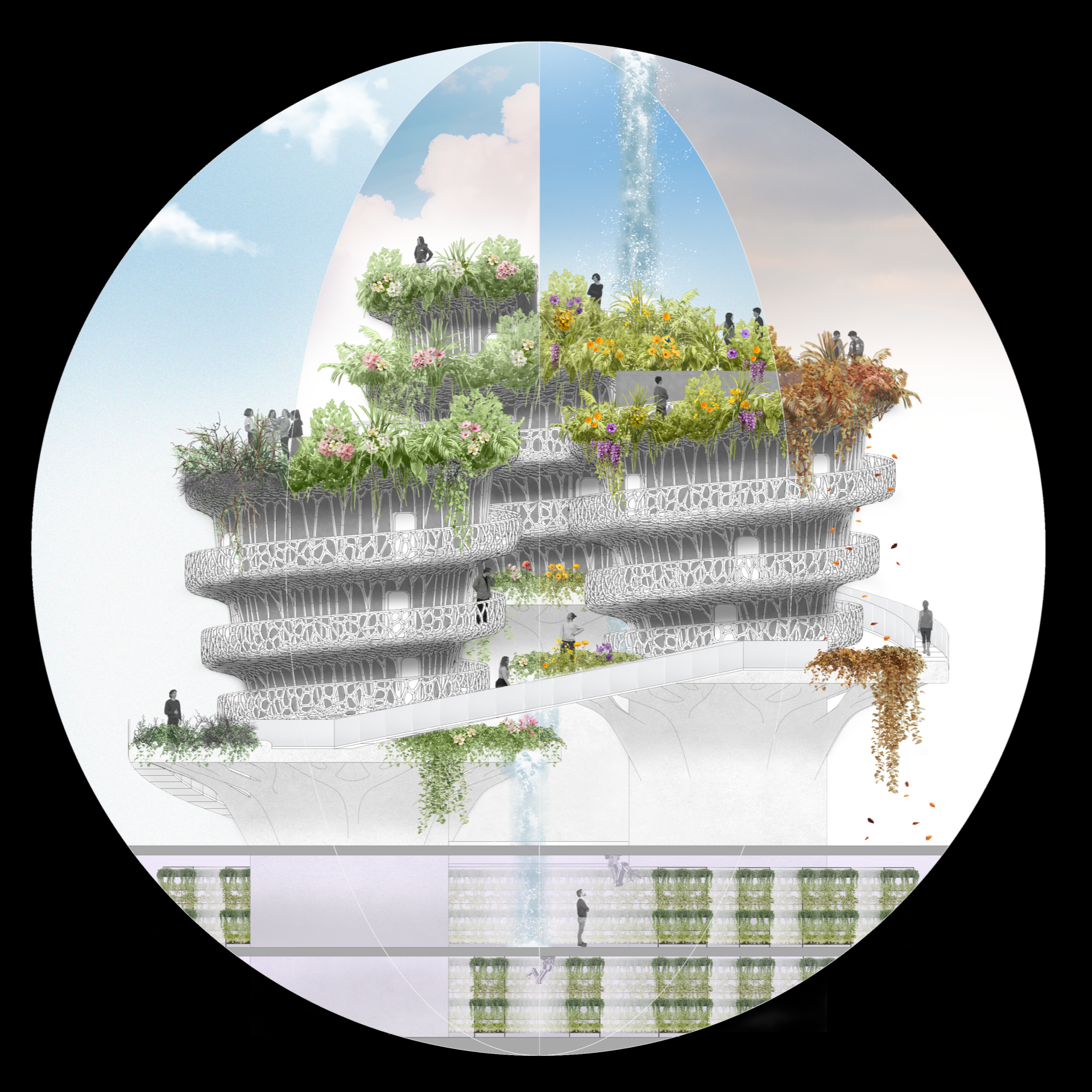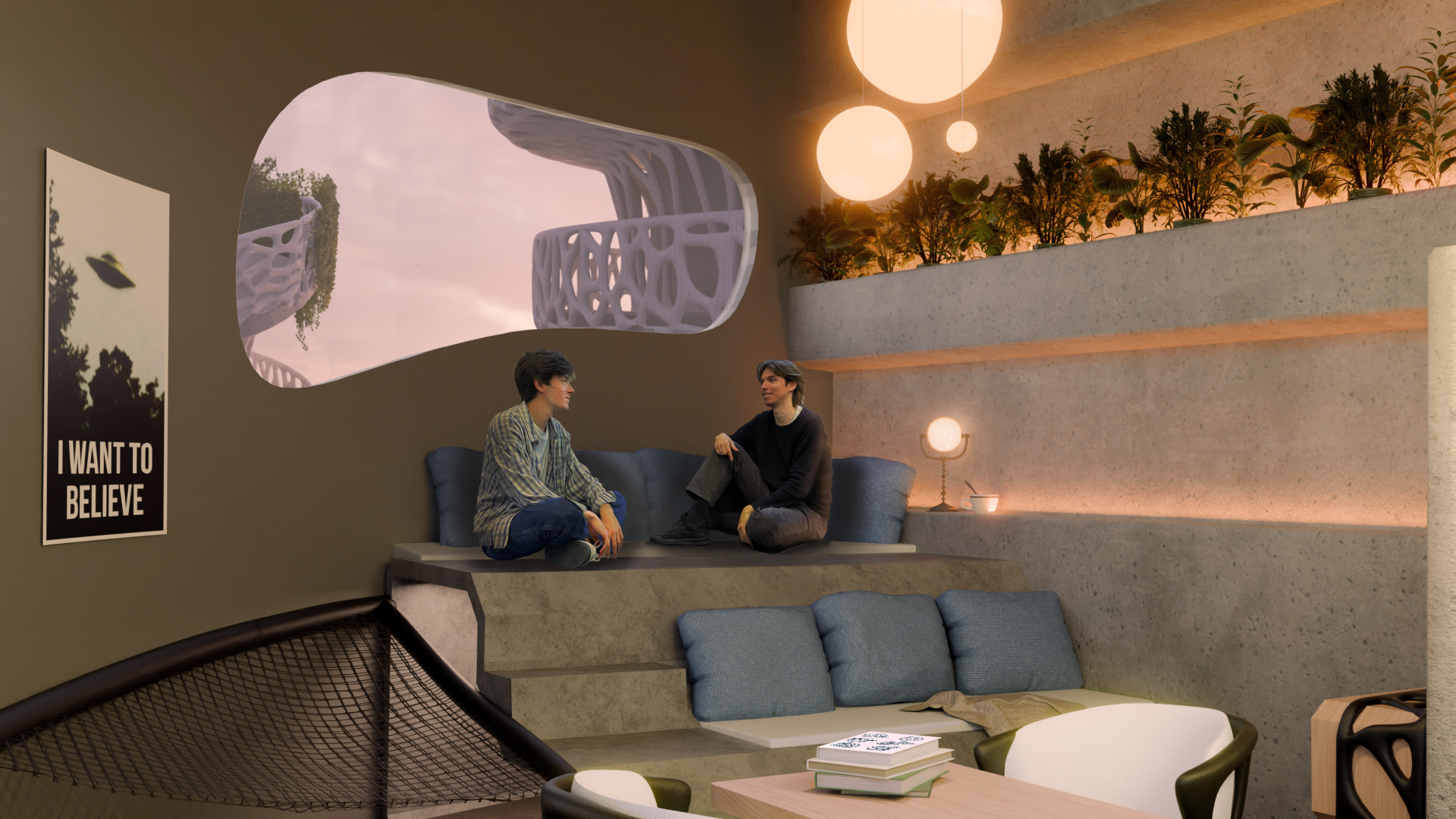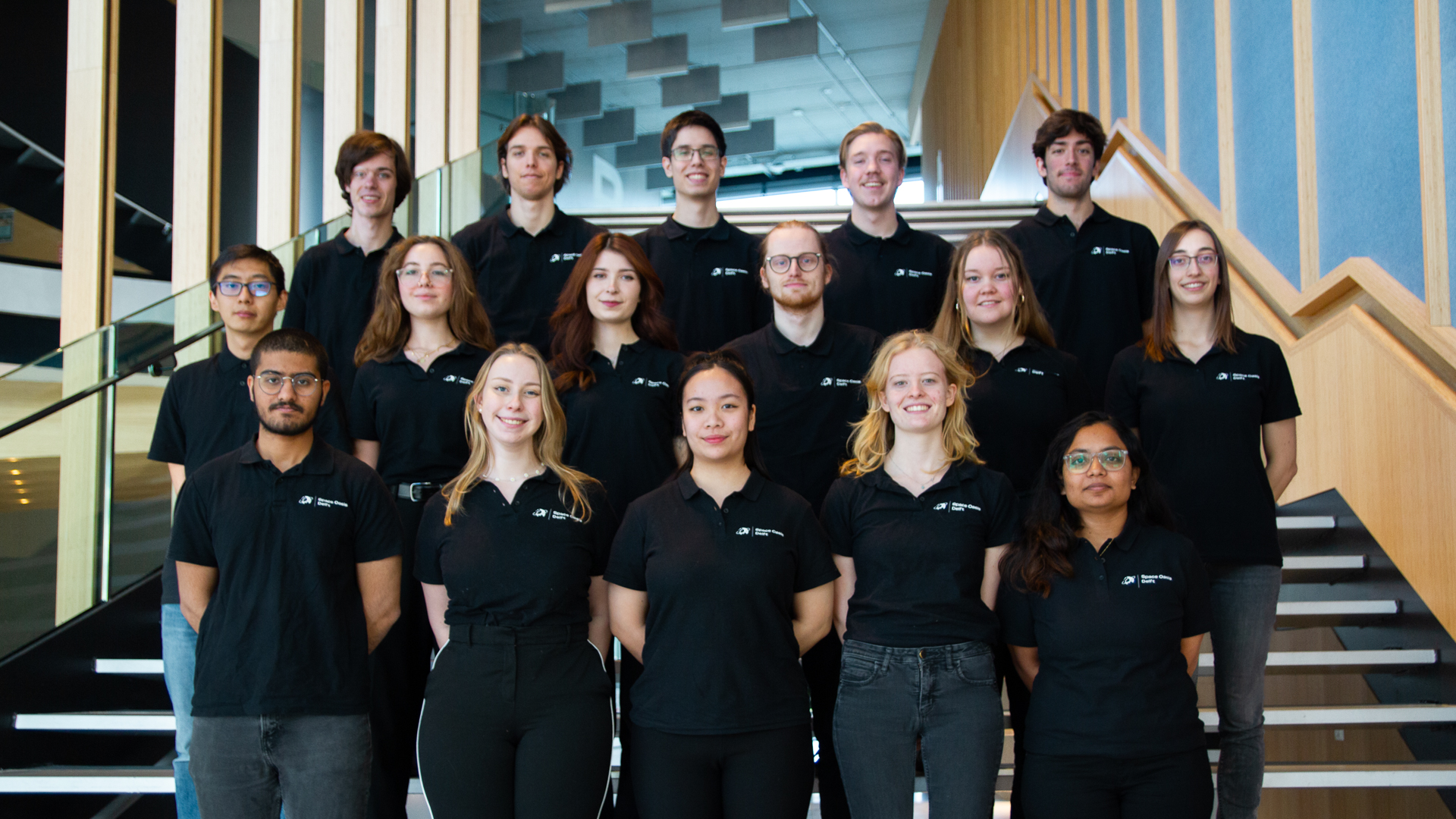Dream Team designs a self-supporting lunar village
Dream Team ‘Space Oasis Delft’ has designed a lunar village for 150+ residents. The dwellings have elements of biomimicry, contain a self-sustaining biosphere and simulate a day-night cycle as well as seasons. Smart design choices safeguard not only the occupants' safety but also their mental well-being.
Ovenbirds and seashells
The village consists of ‘habitats’ for eight people, each with its own radiation shield. The design of these habitats is partly inspired by nature. For example, for the shape of the radiation shield, the team looked at the nests of red ovenbirds. The internal structures have the shape of a spiral staircase, based on spiral sea shells. This shape is self-supporting, providing extra stability.
Transporting construction materials to the moon is complicated and expensive. Therefore, the team considered using existing materials on the moon. For instance, they chose to incorporate lunar regolith into the radiation shields. Furthermore, each habitat forms a self-sustaining ecosystem, reducing the need for supply missions from earth.
A waterfall in slow motion
One important design principle was that the inhabitants should not only survive on the moon, but also enjoy their unique conditions. The biosphere with its plants helps in this regard. In addition, a projection screen simulates the Earth's day-night cycle and seasons. The spiral shape of the structure ensures that residents will continuously meet each other as they move within the habitat.
The design also incorporates playful elements, such as a waterfall whose droplets fall down six times slower than on earth thanks to the low gravity. But this playful solution also has a practical function: the waterfall humidifies the plants in the habitat. In doing so, it helps to combat the monotony of the living spaces by keeping them green, creating a more natural environment for residents.
Renderings of the dining room (top) and living room (bottom). The windows overlook the rest of the structure, with behind it the projection screen simulating day and night.
International competition
With this design, the team will participate in the International Architecture and Innovation Competition organised by the Jacques Rougerie Foundation. The team hopes to stand out in the competition due to its strong technical and scientific basis and thus win the grand prize of €10,000. The competition is open to both individuals and groups, and to both students and professionals.
Marit Vegt, Team Manager Space Oasis Delft, says: "As the first team of Space Oasis Delft, it was important to create a foundation for both our current team and our successors. It is such a pleasure to see how different perspectives and disciplines come together in our project. There is plenty of room for new insights and creativity within our team."
About Space Oasis Delft
Space Oasis Delft is a new Dream Team at our university. Dream Teams are organised entirely by students who collectively enter a competition. Every year, the entire team renews. Space Oasis Delft gives students the chance to combine their passion for space with their studies, while contributing to the growing interest in space colonisation.
For the moment, Space Oasis Delft is the only Dream Team in which students from Architecture and the Built Environment can apply their full professional knowledge. In addition, the team includes a strong contingent from the Faculty of Aerospace Engineering. Civil Engineering and Geosciences, Industrial Design, and Mechanical Engineering are also represented. Finally, several students from outside TU Delft take part. They come, for example, from Leiden University Medical Centre and The Hague University of Applied Sciences.
More information
You can follow Space Oasis Delft on social media. You will also find the most up-to-date information and a complete list of participants on their website.




